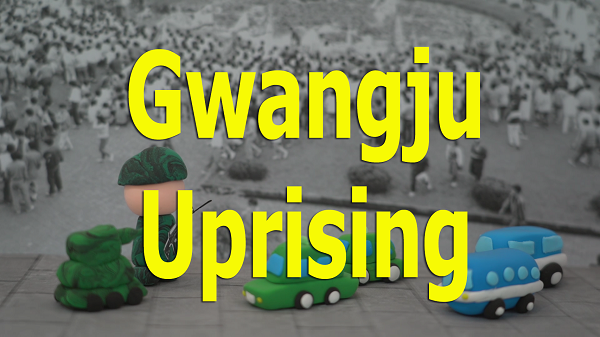[VIDEO NEWS] The Gwangju Democratic Uprising in numbers

2) 512,626 vs. 200
3) The military force that was sent to Gwangju used a total of 512,626 shots of ammunition.
4) The military used at least 11 types of weapons, including M16 rifles, machine guns, grenades and helicopter machine guns.
5) What fended off all these weapons was around 200 taxis of Gwangju.
6) 11 buses and about 200 taxis headed to the provincial government building, where the military was stationed, to join the protests.
7) The story of that day was also made into a movie last year, called “The Taxi Driver.”
8) 45 vs. 0
9) Of the 45 banks in Gwangju that were left unprotected during the 10 days of the uprising,
10) none of them was attacked by looters.
11) When the city was running short on supplies due to roads being blocked, grocery stores and pharmacies began giving out supplies,
12) and people collected rice to share rice balls together.
13) 24 vs. 52
14) The first official death in the Gwangju Uprising was the death of Kim Kyung-cheol, a 24-year-old with a hearing impairment.
15) The soldiers beat him to death for not answering their questions.
16) Inspector General Ahn Byung-ha was released from his position for refusing to follow orders to open fire.
17) He then died at the age of 52 after being tortured.
18) 1 vs. 17
19) On Sept. 1, 1980, the same year as the uprising,
20) Chun Doo Hwan was elected president in an indirect presidential election and held the position for eight years.
21) Sixteen days later on Sept. 17, Kim Dae-jung, who later became president of Korea,
22) was sentenced to death for “causing the uprising on the request of North Korea.”
23) 600 vs. 0
24) In Chun Doo Hwan’s memoir that was published last year,
25) it says that 600 North Korean military agents were involved in the uprising.
26) The South Korean military, which controlled the government, claimed North Korea was behind the Gwangju uprising,
27) and some people in Korean society still felt this way even after Chun’s rule ended.
28) “Some researchers have continuously argued that 600 protestors who claimed to be college students were actually special agents from North Korea.” -“Chun Doo Hwan Memoirs,” Vol. 1, page 535
29) However, the government has never admitted to agreeing with the claims about North Korea.
30) The Ministry of National Defense announced that the claims were false on May 30, 2013.
31) The CIA documents that have been made public also don’t say anything about the North Korean military being involved.
32) 27 vs. ???
33) 27 police and military died in the uprising.
34) Most of them were low-ranked personnel who were obligated to follow orders.
35) But the number of deaths and missing persons involved in the uprising
36) is still yet to be officially determined.
37) While excavation efforts are going on in places presumed to be secret burial sites,
38) finding the remains is not easy.
39) These countless victims, who cannot even be remembered in numbers,
40) are the main reason we should not forget what happened in 1980 in Gwangju.
41) A truth commission is to be launched in September following the passage of the Gwangju Uprising Special Act.
42) The people wonder if the truth that has been buried for 38 years will finally be revealed.
Video sourced from JoongAng Ilbo
Directed and narrated by Park Hae-lee
Procued by Oh Da-seul, An Ji-hye
Translated by Kim Hyo-jung
Edited by Matthew Silberman










with the Korea JoongAng Daily
To write comments, please log in to one of the accounts.
Standards Board Policy (0/250자)